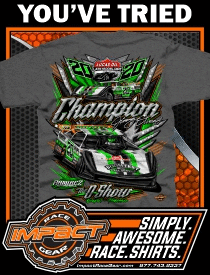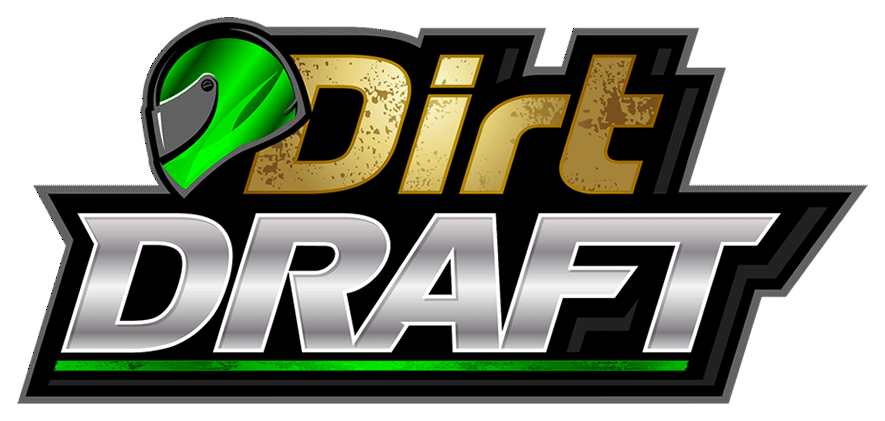
Inside Dirt Late Model Racing
Column: The enduring legacy of Roscoe Smith
Mark Richards knows Dirt Late Model history like few people in the sport. A solid five decades of deep involvement in the industry — plus an impeccable memory — gives the Rocket Chassis co-owner some serious cachet.
So when Richards, 64, says Griffin, Ga.’s Roscoe Smith, who died Aug. 16 at the age of 85 after being hospitalized for pneumonia, deserves more recognition for his role in the division’s evolution, everyone should sit up and listen.
“I’m gonna say Roscoe was one of the pioneers in the Late Model chassis world, and a lot of people don’t know the whole story,” Richards said of the key developments of the production of Dirt Late Models. “Most people lead back to the (C.J.) Rayburn days, but they don’t know it went beyond the Rayburn days.”
Richards’s Dirt Late Model history lesson for the uninitiated goes back to the mid-1970s, a stretch when the division was beginning to emerge from its early modest, do-it-yourself years. Smith was in the middle of the revolution.
A former drag racer who switched to oval competition in 1969 and became a Dirt Late Model stalwart with his checkerboard-roofed No. 44 cars at Atlanta-area tracks, Smith began building Dirt Late Model chassis at his Roscoe Smith Racing Equipment shop. He took the construction process to a new, higher level, not exactly mass-producing chassis like companies today but certainly bringing more workmanship, consistency and ingenuity to the class.
“The mid-‘70s to the late-‘70s, the fastest cars were coming out of Georgia and that area. They were the type of cars winning at Eldora (Speedway) — in dry conditions, they became better,” Richards said, referring to the famed Ohio track’s World 100. “They were being built in different shops down there. One of the World winners, (1977 victor) Doug Kenimer (of Dalton, Ga.), he built his own cars down there. The Thomas boys at Jig-A-Lo (Chassis), over in Alabama, Phenix City, they were building cars. And there were others, but Roscoe Smith was one of the bigger guys in that area, maybe the biggest.
“It was just a different process. Roscoe, he built GM-type front-end cars that were really fast. He was building really good looking cars. Back in those days, that’s all you heard — ‘Roscoe Smith Race Cars, Roscoe Smith Race Cars.’ ”
At the time, Richards was a teenager learning the mechanical ropes working on cars fielded for an array of drivers by his older brother Roger, who noticed the speed and quality of Smith’s vehicles and decided to purchase one because “he felt you needed to go where the fastest cars were,” Richards said. That brought the young Richards to Smith’s shop, where he was amazed by what he saw — a full-fledged business with multiple employees cranking out well-designed machines.
“You gotta realize, racing at that time wasn’t at the level that it’s become,” said Richards, who also met and befriended Smith’s teenage son, future national touring series regular Clint Smith, during his visits to the Georgia shop. “In my eyes, at 16, 17 years old walking in there, it was a big operation. Nobody was doing (sales) numbers like today, or like we were in our heyday (at Rocket) doing 300, 350 cars a year. Back then, I’m gonna say a good chassis builder like Roscoe was building 30, 40, 50 cars a year, but that was a big deal. It was a lot of work to build those cars the way Roscoe built ‘em.”
Richards says that crossing paths with Smith changed the trajectory of his career.
“I feel like Roscoe, the connection that we made with Roscoe, helped me in my, I guess, adventure here of being in the chassis business,” Richards said. “Roscoe always treated us, like, unbelievable. He was just a nice guy, and that’s putting it mildly.
“My brother become friends with Roscoe, and he ended up becoming really good friends with one of the fabricators there, Buddy Parker was the guy’s name, and Buddy actually moved north and worked for my brother and got me on track to build cars. That’s where I learned to build cars — I’m gonna say that in my early years of car building, I learned a lot from that guy.”
Running a Smith car also led Richards to what would become a long-lasting friendship with Rodney Combs, a Cincinnati, Ohio, native and versatile racer who from 1979 and into the early ‘80s had Richards as his crew chief with the Howe Chassis house car team and spent a portion of the ‘80s as Richards’s partner in WRC Race Cars before moving to North Carolina to focus on NASCAR racing. Combs recalled that in 1977, as he was moving into Dirt Late Model racing from the pavement ranks, he was drawn to Richards’s brother’s team one night at Newport (Tenn.) Speedway by the Smith machine they were running.
“I drove for that Bobby Paul from out of Kentucky and we had two cars, and we took both the cars to Newport,” said Combs, now 75 and living in Fort Myers, Fla. “Back then, you could run cars in different heats so I ran both cars, but I didn’t make it (transfer) in either heat. Then here comes somebody, they say, ‘Doug Kenimer says if you will, you need to drive that Roger Richards’s car over there.’
“I knew they had a Roscoe Smith car. I called it a ‘light’ car at the time, and I knew that was the kind of car that you needed. Well, that’s how I met Mark and Roger. They let me go in the sixth heat in the back, and I think we won the heat.”
Combs’s stint driving for Roger Richards was short, but during the summer of 1978, when Combs made a deal to go dirt racing with Dudley Ferrell, then the owner of the paved (and formerly dirt) Tri-County Speedway near Cincinnati, he told Ferrell, “We need to get one of these Roscoe Smith cars. It’s the best. I just run one of these things.”
Ferrell gave Combs the green light to buy a car from Smith. He also wanted to purchase an engine from C.J. Rayburn — the soon-to-be chassis-building legend was still focused on constructing motors — so, late in August 1978, Combs picked up the powerplant at Rayburn’s shop in Whiteland, Ind., and then headed for Smith’s place with his wife, son and brother-in-law.
“We wanted to finish it there and then go Myrtle Beach (Speedway), because they had an NDRA race,” Combs said of the South Carolina track that then had a dirt surface. “We meet Roscoe — and, believe it or not, Clint Smith was little at one time — and me and my brother-in-law stayed there for two, three days to finish that car.”
Combs immediately had a connection with Roscoe Smith. “Working with Roscoe, and talking to him … just a Georgia boy, and me from Kentucky, he knew what I had done (in asphalt racing) and we just hit it off.”
“Just a great guy to talk to, deal with,” Combs continued. “I said, ‘Hey man, I’ve been running pavement, you call the shots. Do your thing (setting the car up) so I’ll know where we’re at.’”
Combs proceeded to flash great speed right out of the box, contending for wins at Myrtle Beach before mechanical trouble sidelined and again the next day in the Hillbilly 100 at Pennsboro (W.Va.) Speedway before an overheating engine sidelined him. The following week he shined with Ferrell’s yellow No. 29 at Eldora’s World 100, setting fast time and finishing sixth.
“I remember doing what we did at Myrtle Beach and calling (Smith) back and I said, ‘We sat on the pole,’ ” Combs said. “He was tickled.
“That car was just bad ass,” he added. “His cars drove like a Cadillac. His stuff was very, very neat, the bodies, the sheetmetal work. No doubt it, Roscoe was ahead of his time as far as a bought race car. He took it to another level as far as back then.”
Smith’s expertise influenced the rise of Rayburn as perhaps the sport’s first large-scale chassis builder in the ensuing years. Both Richards and Combs said Rayburn incorporated Smith’s ideas into his machines that took over the division in the ‘80s. In fact, Combs recalled that Rayburn had a Figure-8 class car, driven by a guy from Indiana, that was “basically close to what Roscoe Smith was building.”
“He had looked at (Combs’s Smith car), and the suspension, that type of stuff,” said Combs, who drove Rayburn’s Figure 8 in Dirt Late Model competition a few times. “The only thing Rayburn did was over-engineer it, jacked with the front end. That was C.J., though. Roscoe Smith didn’t try to over-engineer something. He knew what would work and that’s what he went with.”
“The design of the chassis that Roscoe had, Rayburn kind of used that, but he incorporated the Holman-Moody front end that Jig-A-Lo (Chassis) used at the time rather than the GM front end that Roscoe used,” Richards said. “And that front end is still the front end that all Late Models today are running off of. I can promise you they’re all running off that style of front end that Holman-Moody had back in the’70s in the (NASCAR) Cup world … that has been the best front end over the years for independent front suspension.”
It was Smith, among others, who triggered that evolution to Rayburn cars and the big business of Dirt Late Model chassis building today.
“I say that those cars that Roscoe built changed Late Model history more than anything else,” Richards said.
Smith didn’t carry his stature into the ‘80s and beyond — he sold his business in 1988 — but his role in the development of Dirt Late Model racing helped make him a 2011 inductee of the National Dirt Late Model Hall of Fame. And both Richards and Combs understand how important a figure he was, a fact they relish pointing out to today’s younger generation.
“Roscoe had the first quote-unquote business (for Dirt Late Model chassis building), way before Rayburn,” Combs said. “He was ahead of his time and one hell of a guy to be around. Just what a guy. So laid-back, never got excited about nothing. No hurry, you ain’t gonna rush him. He just knew what he was doing, was good at, and was one hell of a guy to be around and work with.
“Roscoe,” Combs added, “a lot of people followed in his footsteps.”
Ten things worth mentioning
1. Roscoe Smith’s influence extended to some of the biggest players in motorsports. His obituary noted his relationship with longtime NASCAR executive Mike Helton. “Roscoe is a great friend of mine and did so much to help me in my years at Atlanta when I was pretending to be a race driver,” Helton said in an interview years ago that was published in newspapers across America. “He had so much mechanical ability, and his skills as a teacher were very impressive. Still today I think of things Roscoe taught me along the way.”
2. It’s been mentioned before that Smith had a claim to cinematic fame: his shop constructed the Dirt Late Models used for the racing scenes in the 1982 movie Six Pack starring Kenny Rogers as racer Brewster Baker. The dirt-track action was filmed in 1981 at Dixie Speedway in Woodstock, Ga.
3. Richards’s memories of visiting Smith’s during his teenage years are a bit hazy roughly 50 years later, but one specific vision remains frozen in his mind. It’s of Shane Clanton’s late father Billy, a top Georgia racer at the time and one of Smith’s employees. “I remember that Billy Clanton plain as day walking into work late, his shoes untied, his hair standing up on his head like he just crawled out of bed at like 11 o’clock,” Richards said with a laugh while also noting that Shane Clanton bears a striking resemblance to his father “so every time I see Shane, I see Billy Clanton.”
4. Richards’s early connection with Smith launched his friendship with Clint Smith, who is now 60 and helps operate Senoia Raceway. “I met Clint at his father’s shop when he was like 13, 14, and he has become one of my longest, closest friends through this dirt racing,” Richards said. “When Clint got more into (driving), he went on the road racing Rocket cars. He still sells Rocket cars for us today.” Richards also sees Clint’s fabrication abilities as being a reflection of his father. “Clint’s always had really good looking cars. He did great bodywork,” he said. “He actually came here (to Rocket Chassis) one year and worked two weeks with me before the PRI show. We took three cars out there one year that Josh (Richards) won the (WoO) championship and he helped me get the bodies ready.”
5. Want an entertaining conversation? Check out World 100 finishing orders — particularly from the mid- to late-1970s — and go through them with Mark Richards. It’ll be fun as you read off a name and Richards remembers almost everyone with anecdote or memory.
6. Actually, come to think of it, Richards’s uncanny ability to remember so much about so many drivers in the World 100 would make him a great guest for our weekly Dirt Reporters podcast. We could have him come on and just scroll through Eldora results and get his comments on each driver. We have to put this idea on the list along with a guest appearance from Bob Pierce, whom Todd Turner and I want to challenge by bringing up specific races from the past and asking him to tell us what he remembers about them. (Spoiler alert: Bob will remember a lot.)
7. On a more current subject, Richards remarked that he’s very excited about the new Rocket XR2 model car that his company debuted earlier this summer. He said there are now about 20 of the cars racing around the country and he has an ever-growing list of orders to fill.
8. Talk about some travel problems — the Bear Lake, Pa.-based Briggs Transport team certainly experienced them last week while on the road in the Midwest with the WoO tour. First, on Aug. 12, the motorhome pulling a small trailer carrying Boom Briggs’s car broke down around Indianapolis, forcing Briggs to summon a crew member from Pennsylvania to drive out with a pickup truck to tow the trailer on to Wednesday’s WoO event at Highland (Ill.) Speedway. The team's issues didn't end there ...
9. After Thursday’s WoO show at Spoon River Speedway in Banner, Ill., the toterhome hauling Tim McCreadie’s cars had the suspension air bags blow out leaving the track; Illinois racer Bob Gardner and his crew chief helped the team get the rig to a Peterbilt dealership in Davenport, Iowa, where repairs were made on Friday morning thanks to the assistance of trucking company owner Jeff Hoker. (“Jeff definitely pulled some strings to get us fixed,” Briggs said. “He’s a great guy and definitely a big part of Late Model racing.”) But there was still more: the team woke up Sunday morning following the WoO stop at Maquoketa (Iowa) Speedway to find the toterhome’s generator had blown out the rear main seal, forcing them to make a detour to S&S Welding in Greenwood, Neb., to have a new generator installed.
10. After all the travel struggles, Briggs, who raced his car alongside McCreadie at Highland and Spoon River, decided to send him machine home and have the team focus on McCreadie’s effort in this weekend’s WoO doubleheader at Arrowhead Speedway in Colcord, Okla.

















































